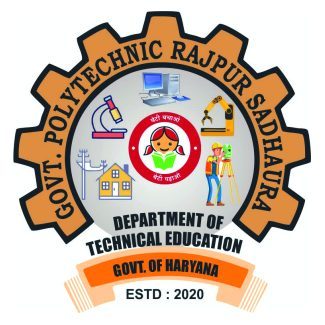Perception Index
At Government Polytechnic Rajpur Sadhaura, we prioritize continuous improvement in teaching, learning, and overall student experience. One of the key tools for evaluating the effectiveness of educational strategies and identifying areas for improvement is the Student Perception Index (SPI). The SPI is a structured mechanism that collects, analyzes, and interprets students’ feedback to assess their satisfaction with various aspects of their academic and campus life.
The Student Perception Index (SPI) is integral to our commitment to improving the quality of education, enhancing the learning environment, and ensuring that students’ voices are heard. Through this index, the institution aims to gather valuable insights into how students perceive the quality of teaching, facilities, services, and overall experience at the institution.
Objective
The primary objectives of the Student Perception Index (SPI) are:
- Enhance Teaching Quality: Identify areas where teaching methodologies and faculty performance can be improved based on student feedback.
- Improve Infrastructure and Facilities: Gauge student satisfaction with the institution’s physical infrastructure, including classrooms, laboratories, libraries, and recreational facilities.
- Boost Student Engagement: Understand the level of student engagement and participation in co-curricular and extracurricular activities, helping us to create more opportunities for involvement.
- Monitor Campus Environment: Assess students’ perceptions regarding campus cleanliness, safety, and overall atmosphere.
- Ensure Continuous Improvement: Use the insights gained from the SPI to make data-driven decisions for academic and administrative improvements.
Components of SPI
The Student Perception Index (SPI) will cover several key components that are essential to the student experience:
- Academic Experience
- Quality and relevance of the curriculum.
- Effectiveness of teaching methods and faculty interaction.
- Availability and quality of academic resources (e.g., textbooks, e-resources).
- Clarity of academic goals and performance evaluation methods.
- Infrastructure and Facilities
- Condition and availability of classrooms, laboratories, and workshops.
- Library facilities, including accessibility and resources.
- Technological resources, including Wi-Fi and computer labs.
- Availability of sports and recreational facilities.
- Campus Environment
- Cleanliness, maintenance, and safety on campus.
- Overall campus atmosphere and student welfare.
- Accessibility of facilities for differently-abled students.
- Supportive environment for mental health and well-being.
- Co-Curricular and Extracurricular Activities
- Opportunities for student participation in clubs, events, and cultural activities.
- Student engagement in conferences, workshops, and seminars.
- Quality and frequency of guest lectures, industrial visits, and hands-on experiences.
- Administrative Support
- Ease of accessing administrative services (e.g., admissions, exams, counseling).
- Efficiency of the examination and evaluation process.
- Availability and effectiveness of career counseling and placement services.
Data Collection Methodology
The Student Perception Index (SPI) will be collected through:
- Surveys and Questionnaires: Structured surveys will be distributed among students to gather their feedback on various components of their academic and campus life.
- Online Forms: Digital forms will be used to facilitate easy and anonymous submission of feedback.
- Focus Group Discussions: Periodic focus group sessions will be held to understand students’ detailed perspectives on certain aspects of their experience.
- Suggestion Boxes: Physical and digital suggestion boxes will be available for students to submit feedback or suggestions anonymously.
Analysis and Reporting
The feedback gathered through the SPI will be systematically analyzed to:
- Identify Key Trends: Understand overall student satisfaction and highlight areas requiring attention.
- Benchmark Performance: Compare the current perception with previous feedback to track improvements or areas of decline.
- Develop Actionable Insights: Generate specific recommendations for faculty, administration, and infrastructure improvements based on the student feedback.
A comprehensive SPI Report will be prepared and shared with the institution’s leadership and relevant departments, ensuring transparency and accountability in addressing the feedback provided by students.
Actionable Outcomes
Based on the analysis of the Student Perception Index, the institution will:
- Revise Teaching Practices: Make necessary adjustments to teaching methodologies and faculty training programs to enhance the quality of education.
- Upgrade Infrastructure: Prioritize investments in infrastructure improvements based on the most critical areas of concern highlighted by students.
- Enhance Student Support: Strengthen student support systems, including counseling, career guidance, and peer mentoring.
- Improve Administrative Processes: Streamline administrative and evaluation processes to make them more student-friendly and efficient.
Benefits of SPI
- Student-Centered Improvements: The SPI helps us align the institution’s offerings with students’ needs and expectations, enhancing their overall educational experience.
- Informed Decision-Making: Provides the leadership and faculty with concrete data to make decisions about curriculum changes, infrastructure upgrades, and administrative improvements.
- Accountability and Transparency: The SPI process fosters an environment of accountability and ensures that students’ voices are heard in institutional development.
The Student Perception Index (SPI) at Government Polytechnic Rajpur Sadhaura is an important tool in our ongoing efforts to improve the quality of education, student life, and overall institutional performance. Through continuous engagement with our students, we aim to create a dynamic and supportive learning environment that meets the ever-evolving needs of the student community.





 Total Users : 7290
Total Users : 7290